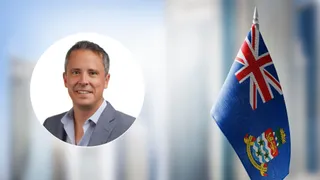
The global response to crisis: Groundhog Day or engineering for change?
Albert Einstein is said to have defined insanity as “doing the same thing over and over again and expecting different results”. I feel that way about each new local or global crisis: an endless cycle of neglect, panic, and then blame. We have all seen this movie before.
Many homeowners in the North Eastern US lost power for multiple days following Super Storm Sandy in 2012. How many promised themselves when the power came on that they would buy a generator? In August this year, 120,000 of these same homeowners were again without power a week after tropical storm Isaias.
The local power utilities promise “Never again. Communication will improve. Next time will be better.” It was same story in 2012.
There is one thing you can control in a crisis: the information you use. Major catastrophes need to be planned for and responded to in the same way as a complex engineering problem, using action-oriented analysis including broad academic disciplines.
No single discipline or agency can address a large-scale problem. For example, many disaster plans treat a pandemic purely as a medical issue focusing on hospitals, healthcare professionals, and the creation and distribution of vaccines.
“Why did it take a pandemic for most companies to embrace working from home?”
Public health is as much about engineering as medicine. Why did so many countries have to scramble to address sanitation and ventilation issues not only in hospitals but in the workplace during a pandemic?
Why did it take a pandemic for most companies to embrace working from home? Why were so many public schools and universities not prepared for online learning? Why didn’t healthcare providers offer telemedicine years ago?
Engineered solutions are often the most cost-effective. They keep people safe as well as saving time and money. Change can be applied against a broad spectrum of future threats because they pay for themselves in other ways.
Vaccines do not usually offer non-medical payoffs. However, putting power lines underground verses trimming trees after every hurricane and ice storm can improve reliability, reduce maintenance, improve safety, quality of life, and peace of mind.
Katrina 2005 vs 2020
The Swiss Re Institute has produced a report titled “15 years after Katrina: Would we be prepared today?”. Hurricane Katrina remains the costliest natural catastrophe for the global insurance industry to date.
The 2004 and 2005 Atlantic hurricane seasons produced a total of 24 hurricanes. This period of hurricane activity sparked the development of new catastrophe models using a near-term view of risk for the first time rather than established approaches that relied on long-term historical data.
If Hurricane Katrina hit in 2020 with the same wind and storm surge as 2005, but with current exposure information and updated flood protection and vulnerability assumptions, the privately insured losses would exceed those of 2005.
This would be the case despite New Orleans’ lower population and strengthened flood protection system. Even with new modelling and new protections, there would be the same disastrous results. Maybe instead of updating models, it is time to really consider where we build, and if we build, should insurance, commercial or governmental, protect it?
WHO’s on first?
The World Health Organization (WHO) spent years and hundreds of millions of dollars developing a plan for a pandemic it knew would come. The SARS pandemic of 2003 convinced WHO members to retool the organisation.
The key to this “new” plan was that members agreed to improve their ability to contain epidemics and to report outbreaks that spread outside their borders, and international laws were updated requiring WHO members to do both.
Time and again since 2003, countries both large and small failed to appropriately respond (Ebola 2007, Dengue 2008, Zika 2015). Should we be surprised by the COVID-19 response?
The organisation’s actions in the COVID-19 pandemic are now the subject of international review. Many global health experts say the WHO’s emergency warning system needs to change. Some argue committees need clearer criteria for declaring a pandemic. Others argue the WHO should have more power. These were some of the same suggestions made following the 2003 crisis.
An engineered approach
Seven months into this current pandemic, many are asking when things will return to normal? I propose a different question: what will or should change forever?
Plaintiff lawyers and governmental bodies are again looking to insurance carriers to absorb much of the cost from this pandemic. It was no different after 9/11. Shifting the burden to the insurance industry by abrogating insurance contracts either through the courts or the legislative process is wrong.
The insurance industry should do more than just defend specific lawsuits. We need an engineered approach. The industry should seek declaratory judgements to conclusively rule on and affirm the rights, duties, or obligations insurers have and to limit potential future liability.
We should also work with federal and local lawmakers to ensure they do not try to rewrite private insurance contracts today or in the future.
Greg Lang is the founder of the Reinsurance and Insurance Network. He can be contacted at: glang@rainllc.com

